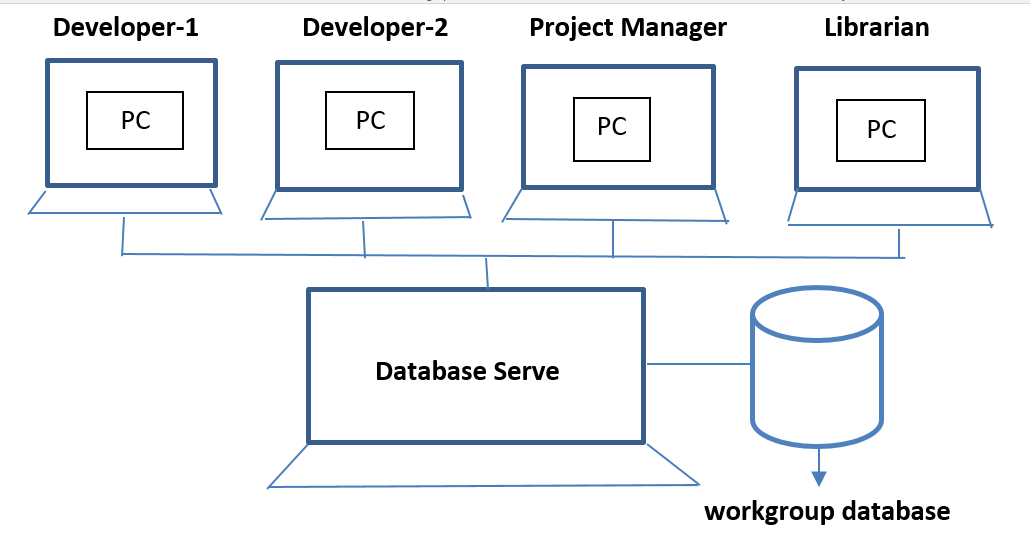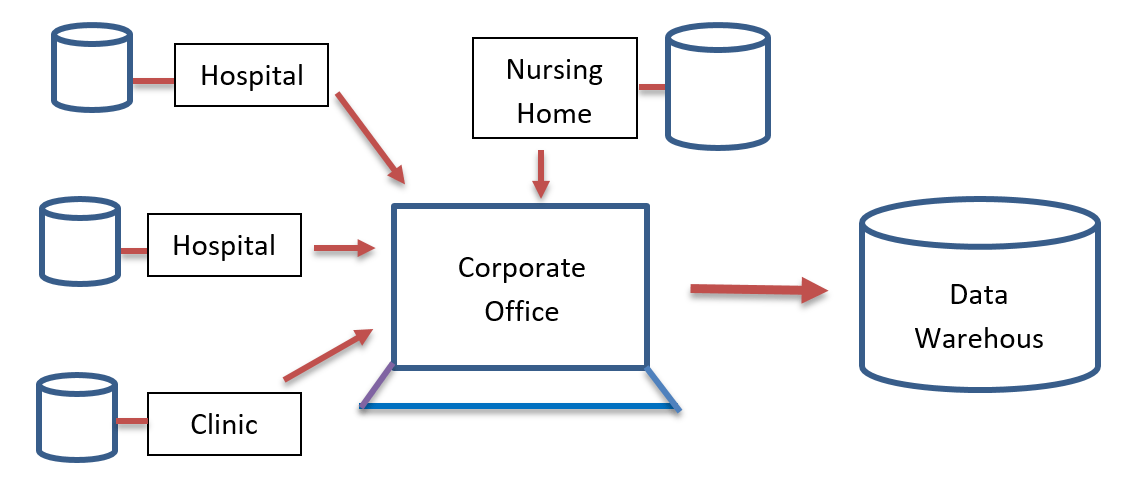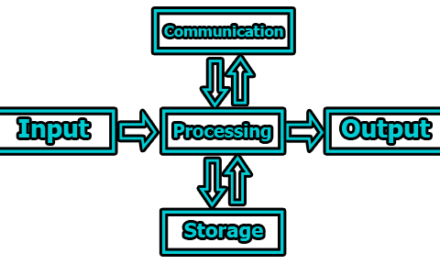The range of database application:
Databases range from those for a single user with a desktop computer to those on mainframe computer with thousands of users. The range of database application can be divided into four categories from simplest to most complex.
1.Personal Computer Database: Personal computer (PC) databases are designed to support one user with a standalone personal computer (for example: a desktop or a laptop computer). For example; consider a company that has a number of sales persons who call on actual or prospective customers. Each salesperson might carry a laptop computer with a simple database application to record customer information and the details of contacts with each customer.
Some of the key decisions that must be made in developing personal computer databases are the following:
- Should the application be purchased from an outside vendor or developed within the organization?
- If the database application is developed internally, should it be developed by the end user or by a professional within the information systems department?
- What data are required by the user and how should the database design?
- What commercial DBMS product should be used for the application?
- Who is responsible for accuracy of the data in the personal computer database?
2. Workgroup Databases: A workgroup is a relatively small team of people who collaborate on the same project or application. A workgroup typically comprise fewer than 25 persons. These persons might be engaged with a construction project or with developing a new computer application. A workgroup database is designed to support the collaborative efforts of such a team.
The method of sharing the data in this database is shown in the above figure. Each member of the workgroup has a desktop computer and the computers are linked by means of Local Area Network (LAN). The database is stored on a central device called the database server. Thus each member of the workgroup has access to the shared data.
In establishing a workgroup database, the organization must answer the same questions that applied to personal computer databases. In addition, the following database management question arise:
- How can the design of the database be optimized for a variety of group members’ information requirement?
- How can the various members’ use the database concurrently without comprising the integrity of the database?
- Which database processing operations should be performed at a workstation and which should occur on the server?
3. Department Database: A department is a functional unit within an organization. Typical examples of departments are personnel, marketing, manufacturing & accounting. A department is generally larger than a workgroup (typically between 25 & 100 persons)
Department databases are designed to support the various functions & activities of a department. For examples; consider a personnel database that is designed to track data concerning implies, jobs, skills and job assignments.
Typical questions that must be addressed when designing and implementing department databases include the following:
- How can the database and its environment be designed to produce adequate performance give the large number of users and user transaction?
- How can adequate security be provided to protect against unauthorized disposer or distribution of sensitive data?
- What database and application development tools should be used in this complex environment?
- Do other departments maintain the same type of data, and if so, how can data redundancy and consistency of database managed?
4. Enterprise Database: An enterprise database is one whose scope is the entire organization or enterprise. Such databases are extended to support organization-wide operation and decision making. Arguably the most important type of enterprise database. Today is called a data warehouse. A data warehouse is an integrated decision support database whose content is derived from the various operational databases (such personal computer workgroup & department databases).
Consider a large health care organization that operates a group of medical centers including hospital, clinic and nursing home. As shown in the above figure each of this medical center has a separate database. These databases contains data concerning patient, physician, medical services, business operation etc.
Several questions that often arise in the context of an enterprise database are the following:
- How should the data be distributed among the various locations in the corporate structure?
- How can the organization develop and maintain standards concerning data names, definitions, formats & related issues?
Database System Application:
Databases are widely used. Some representative applications are as follows:
- Banking: For customer information, accounts, loans and banking transaction.
- Airlines: For reservations schedules information.
- Universities: For student information, course, registration and results with grades.
- Credit Card Transaction: For purchases on credit cards and generation of monthly statements.
- Telecommunication: For keeping records of calls made, generating monthly bills, maintaining balances on prepaid calling cards and storing information about the communication networks.
- Finance: For storing information about holdings, sales, purchases of financial instruments such as stocks and bonds; also for storing real time market data to enable online trading by customers and automated trading by the firm.
- Sales: For customer, product and purchase information.
- Online Retailers: For sales data noted above plus online order tracking, generation of recommendation lists and maintenance of online product evaluations.
- Manufacturing: For management of the supply chain and tracking production of items in factories, inventories of items in warehouse and stores and orders for items.
- Human Resources: For information about employees, salaries, payroll taxes, benefits and for generation of pay checks.
Reference:
Database System concepts, Written by Abraham Silbierschatz (Page no- 1-2)

Assistant Teacher at Zinzira Pir Mohammad Pilot School and College











